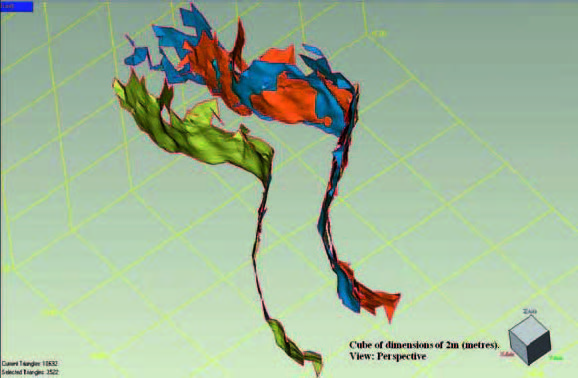Contribution to a Rock Block Slide Examination by a Model of Mutual Transformation of Point Clouds
DOI:
https://doi.org/10.3986/ac.v38i1.140Abstract
Basic objective of this article is to find out whether the rock block on which the castle of Crni kal is situated sticked once to the Kraški rob wall. The result is given on the basis of comparison of forms of both presumed contact surfaces represented by a great number of points determined in space. This cloud of points has been captured by 3D terrestrial laser scanning. On the basis of assessment of geological and morphological characteristics of the Crni kal rock block and the Kraški rob wall 12 characteristic pairs of corresponding (matching) points were collected, one pair consisting of two points, each from its own wall. By use of a method called 12-parameter affine transformation, transformation parameters of one cloud transformation into the other one were calculated. Since for such a transformation 4 pairs of points are enough, and there were even 12 pairs of points used in order to provide better results, the socalled least square method (LSM) was used. By the so obtained transformation vector the reference point cloud of the Crni kal rock block was transformed, for a size of the vector move back, into a cloud of transformed points which should match the reference point cloud of the Kraški rob wall. The comparison of a reference point cloud of Kraški rob and a cloud of transformed points showed that the rock block of Crni kal slid in a S-SW direction for 4.7 m in form of a block failure. Static analysis of matching point clouds proved that as much as 95 % of points fell within a distance less than 0.74 m which confirmed the hypothesis that the rock block on which the castle of Crni kal was situated represented once a part of the Kraški rob wall. Prior to the 11th century at least, it split away from it and moved parallel to the wall in form of a block failure.
Downloads

Downloads
Published
How to Cite
Issue
Section
License
Authors guarantee that the work is their own original creation and does not infringe any statutory or common-law copyright or any proprietary right of any third party. In case of claims by third parties, authors commit their self to defend the interests of the publisher, and shall cover any potential costs.
More in: Submission chapter




